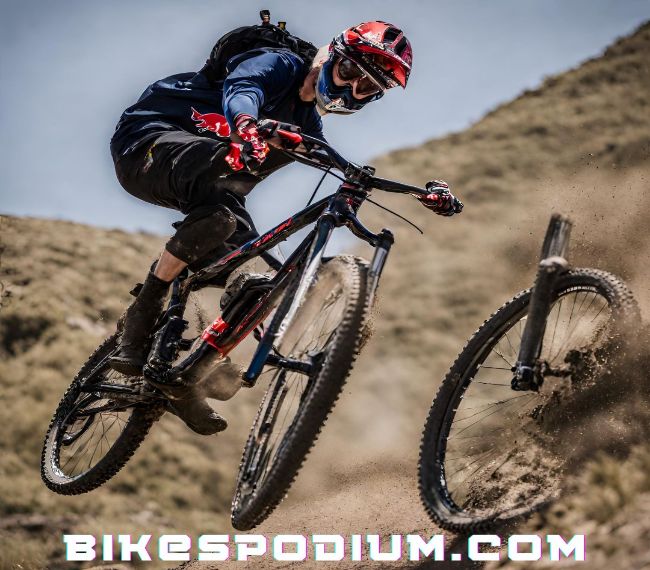29er Inch Wheels VS 26er Inch Wheels
When it comes to choosing a mountain bike, one of the most important decisions you’ll have to make is the wheel size.
The two popular options in the market are the 29er and 26er mountain bikes.
Each has its own set of advantages and disadvantages, so it’s crucial to understand the differences between them before making a decision.
In this article, we’ll explore the key factors to consider when choosing between a 29er and 26er mountain bike.
29er Mountain Bikes
29er mountain bikes have gained popularity in recent years, and for good reason. The larger wheel size offers several advantages that make it an attractive choice for many riders.
1. Improved Roll-Over Ability
One of the primary benefits of a 29er mountain bike is its improved roll-over ability. The larger wheels allow you to effortlessly roll over obstacles, such as rocks and roots, without getting stuck. This becomes particularly useful when riding on rough terrains or technical trails, where obstacles are more common.
In addition to improved roll-over ability, larger wheels also provide better traction. The increased wheel contact with the ground improves grip and stability, allowing you to maintain control on loose or slippery surfaces. This is especially advantageous when riding in wet or muddy conditions, as the larger wheels help to prevent the bike from sliding.
2. Enhanced Stability
The larger wheel diameter provides greater stability, especially at high speeds. This stability is particularly beneficial when descending steep and rocky sections, as it reduces the risk of losing control. Additionally, the increased wheel contact with the ground improves traction, allowing you to maintain control on loose or slippery surfaces.
Moreover, the larger wheels also offer better stability when cornering. The increased wheelbase provides a more planted feel, allowing you to confidently lean into turns without the fear of washing out. This is especially advantageous when riding on twisty trails or tackling sharp corners.
3. Smoother Ride
With larger wheels, 29er mountain bikes offer a smoother ride over rough terrain. The larger tire volume helps to absorb bumps and vibrations, providing increased comfort during long rides. This can be especially advantageous for riders who prioritize comfort and enjoy covering longer distances.
In addition to increased comfort, the larger wheels also provide better shock absorption. The added tire volume allows for lower tire pressures, which helps to further smooth out the ride by providing extra cushioning. This is particularly beneficial when riding on rough and rocky trails, as it reduces the impact on your body and improves overall ride quality.
4. Better Momentum
Another advantage of 29er mountain bikes is their ability to maintain momentum. The larger wheels have a greater rotational inertia, meaning they require less effort to keep rolling. This can be beneficial for riders who frequently encounter flat or rolling terrains, as it helps maintain a consistent speed and requires less pedaling effort.
Furthermore, the increased momentum of 29er mountain bikes allows for better efficiency. The larger wheels carry more speed and momentum through obstacles, making it easier to navigate technical sections and maintain a steady pace. This is particularly advantageous when tackling longer climbs or participating in endurance races.
26er Mountain Bikes
While 29er mountain bikes have gained popularity, 26er mountain bikes still have a dedicated following. Here are some reasons why riders might prefer the smaller wheel size:
1. Maneuverability
One of the main advantages of 26er mountain bikes is their maneuverability. The smaller wheels offer a more nimble and agile ride, making it easier to navigate tight corners and twisty trails. This makes them an excellent choice for riders who prioritize quick handling and enjoy technical trail riding.
Additionally, the smaller wheels also offer better maneuverability in the air. The reduced rotational mass allows for quicker spins and rotations, making it easier to perform jumps and tricks. This is particularly advantageous for riders who enjoy hitting the bike park or participating in freestyle events.
2. Lighter Weight
Due to their smaller wheel size, 26er mountain bikes are generally lighter than their 29er counterparts. This can be advantageous for riders who prioritize speed and agility, as a lighter bike can accelerate more quickly and feels more responsive.
In addition to being lighter, 26er mountain bikes also tend to have a more compact frame design. This results in a more agile and playful ride, allowing riders to quickly change directions and navigate technical terrain with ease. This is particularly beneficial for riders who enjoy riding tight and technical trails or participating in cross-country races.
3. Playfulness and Jumping
The smaller wheel size of 26er mountain bikes makes them inherently more playful and suitable for jumps and tricks. The reduced rotational mass and increased maneuverability allow riders to easily maneuver in the air and perform stunts. If you enjoy hitting the bike park or performing aerial tricks, a 26er mountain bike might be the right choice for you.
Furthermore, the smaller wheels offer better control and precision in the air. The reduced wheelbase and smaller contact patch make it easier to manipulate the bike mid-air, allowing for more creative and stylish riding. This is particularly advantageous for riders who enjoy freestyle and dirt jumping disciplines.
4. Availability of Parts
Although 29er mountain bikes have gained popularity, 26er bikes still have a significant presence in the market. As a result, finding replacement parts for 26er mountain bikes is generally easier and more affordable compared to 29er bikes. This can be an important consideration for riders who like to maintain their bikes themselves or live in areas with limited access to bike shops.
Moreover, the availability of parts also extends to aftermarket options. Since 26er mountain bikes have been around for a longer time, there is a wider range of aftermarket components available specifically designed for them. This allows riders to customize and upgrade their bikes according to their preferences and needs.
Considerations for Choosing the Right Bike
Now that we’ve discussed the advantages of both 29er and 26er mountain bikes, let’s consider some factors to help you make an informed decision:
1. Riding Style and Terrain
Consider your riding style and the type of terrain you’ll be predominantly riding on. If you enjoy fast descents, technical trails, and need better roll-over ability, a 29er mountain bike might be the better choice. On the other hand, if you prioritize maneuverability, jumps, and tricks, a 26er mountain bike may suit your needs better.
Additionally, consider the specific features of the trails you’ll be riding on. If the trails are tight, twisty, and technical, a 26er mountain bike’s nimble and agile nature can provide a significant advantage. However, if the trails are more open and feature long climbs and descents, a 29er mountain bike’s stability and improved momentum might be more suitable.
2. Body Size and Fit
Your body size and fit are crucial factors to consider when choosing the right mountain bike. Generally, taller and larger riders tend to find better comfort and fit on 29er mountain bikes, while shorter riders might feel more comfortable on 26er mountain bikes. However, it’s important to test ride both sizes to determine your personal preference and what feels most comfortable for you.
In addition to body size, consider your riding position and preferences. If you prefer a more upright riding position and prioritize comfort over aerodynamics, a 29er mountain bike’s larger frame and wheel size might be more suitable. Conversely, if you prefer a more aggressive and compact riding position, a 26er mountain bike’s smaller frame and wheel size can provide a better fit.
3. Future Compatibility
It’s worth considering the future compatibility of your mountain bike choice. While 26er mountain bikes are still widely available, the industry trend seems to be moving towards larger wheel sizes. Therefore, if you plan on upgrading or replacing parts in the future, a 29er mountain bike might be a more future-proof choice.
Additionally, consider the availability of wheel size-specific components and accessories. While both 29er and 26er mountain bikes have a wide range of compatible parts, some specialized components such as forks, wheels, and tires might be more readily available for one wheel size over the other. This can impact your ability to customize and upgrade your bike in the future.
4. Budget
Last but not least, your budget will play a significant role in your decision-making process. Generally, 26er mountain bikes tend to be more affordable due to their lower demand and availability of components. If budget is a major concern, a 26er mountain bike could be a cost-effective option.
However, it’s important to consider the long-term costs as well. If you anticipate needing to replace components or upgrade your bike in the future, the availability and cost of parts for each wheel size should be taken into account. While 26er mountain bikes might be cheaper initially, the potential costs of maintaining or upgrading the bike should be factored in.
In conclusion, choosing between a 29er or 26er mountain bike ultimately depends on your individual preferences, riding style, terrain, and budget. Both options have their own distinct advantages and drawbacks. It’s essential to evaluate these factors and test ride different bikes to determine which one feels the most comfortable and suits your needs the best. Happy riding!
FAQ
Q1: What are the advantages of a 29er mountain bike?
A1: A 29er mountain bike offers improved roll-over ability, enhanced stability, a smoother ride, and better momentum.
Q2: What are the advantages of a 26er mountain bike?
A2: A 26er mountain bike offers increased maneuverability, lighter weight, playfulness and jumping capabilities, and better availability of parts.
Q3: How do I choose between a 29er and 26er mountain bike?
A3: Consider your riding style and terrain, body size and fit, future compatibility, and budget to make an informed decision.
Q4: What should I consider when choosing the right mountain bike?
A4: Consider factors such as riding style and terrain, body size and fit, future compatibility, and budget to choose the right mountain bike for your needs.



